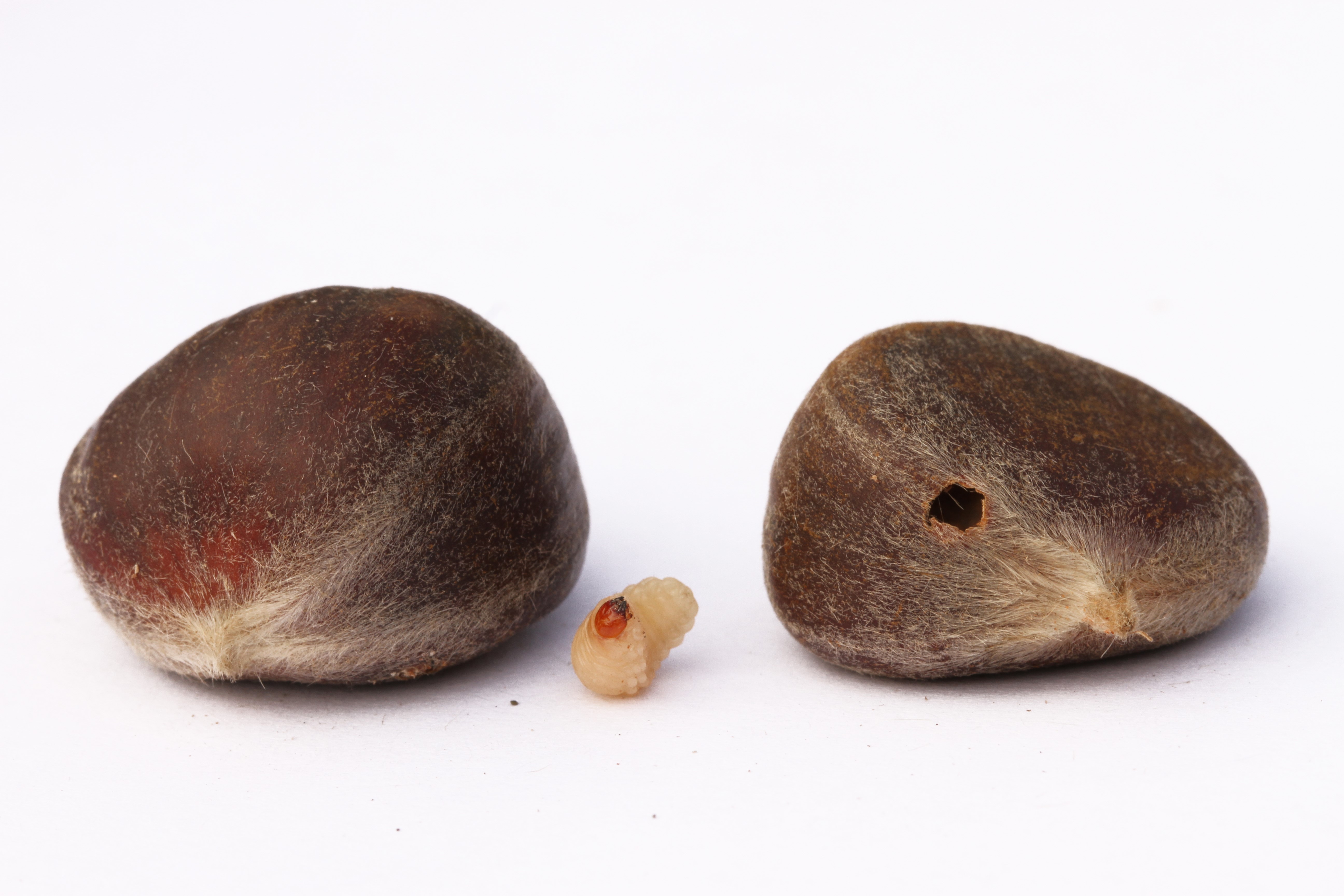News
There’s no such thing as a free lunch: Eat efficiently while not getting eaten!
Eating without getting eaten is a tricky problem and, mindful of the life-dinner principle, David Macdonald reports on a new WildCRU collaboration in China that sheds light on this daily dilemma for two rodent species: a generation of animal behavior studies fruitfully probed optimal foraging theory, of which an important element is how a hungry forager judges food quality quickly and reliably. Together with WildCRU researchers Chris Newman and Christina Buesching, I linked up with Wenwen Chen and Youbing Zhou at the Chinese Academy of Sciences’ Institute of Botany, to discover that both Chinese white-bellied rats and Edwards’s long-tailed giant rats from the Hubei region of Central China could discriminate between healthy seguin chestnuts, and those hollowed out by the chestnut weevil (see photo).
By examining the nuts the two species of rats improved their success at selecting sound nuts from parasitized ones to 86.54% in the wild and 90.93% in an enclosure. However, as always, the devil (or in this case, the adaptive fascination) was in the detail: body size was important. The much larger Edwards’s long-tailed giant rat (ca. 500g) consistently traded-off food quality and quantity in a compromise strategy, irrespective of whether they were presented with chestnuts individually in a captive arena, or in a competitive wild environment, subject to the reality of predation. In contrast, the diminutive Chinese white-bellied rat (ca. 50g) was much more sensitive to competition from other foraging rodents, and potential predators: in the enclosure they adopted a quality-optimizing foraging strategy; however, in the wild they employed a quantity-optimizing strategy. That is, they went for a ‘snatch and grab’ approach – giving less time to nut assessment, thereby minimizing their exposure to danger or being ousted.
So what? Our findings shed light on some general principles. First, even superficially similar animals may balance risks differently – afterall, both these species are rats, but each faced risk a different way. Second, and with conservation implications, granivorous mammals play a crucial role in animal-mediated seed dispersal, essential to maintaining forest regeneration. Any factor altering their foraging behaviour is likely to have cascade effects on the physical habitat of their ecosystem.
For more information: Chen WW, Zhang Z, Buesching CD, Newman C, Macdonald DW, Xie ZQ, Sun SC, Zhou YB (2017) Discrimination behavior mediates foraging quality versus quantity trade-offs: nut choice in wild rodents. Behavioral Ecology. doi:10.1093/beheco/arw180.






